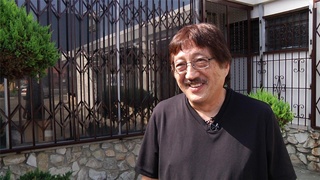Entrevistas
World War II Incarceration
We went, at the beginning of the war we went to Santa Anita racetrack. And we stayed there for the nine - nine months, and as Catholics probably we would have gone with the Catholics community to Manzanar, but because my father was a doctor, he had to go wherever they sent him. We were very lucky, my godmother is Polish and her husband is Japanese so we were able to store some things at her house, we were able to store some things at the Mary Knoll Sanitarium, and then my mother or sister told me it’s someplace else, so no, nobody, no doctors took anything with them. It was just all provided by the government. When we did go to Santa Anita, because our last meal was at Monrovia, and then the sisters drove us to Santa Anita so we were fortunate not to have just one suitcase, just like many of the doctors that came from every other place. We were sent to Jerome, Arkansas and we stayed there and then when Jerome closed we went to Rohwer, Arkansas. We were in camp three and a half years and perhaps we could have left earlier but my father did not want to leave until it was okay to come back to the west coast.
Fecha: February 3, 2010
Zona: California, US
Entrevista: Eiko Masuyama, Carole Fujita, Yoko Nishimura
País: Watase Media Arts Center, Japanese American National Museum







